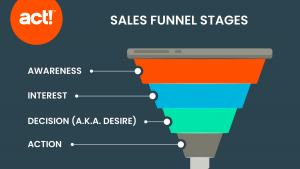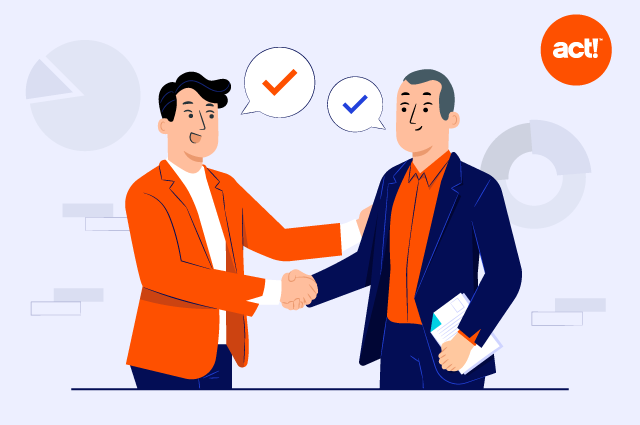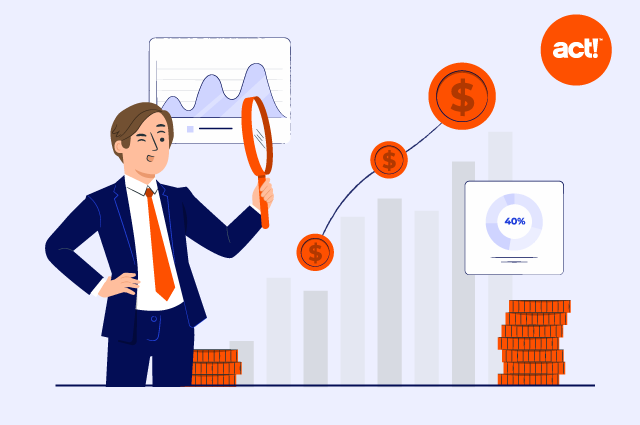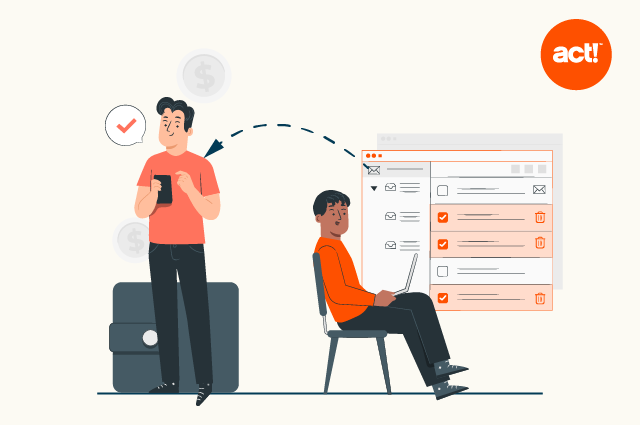
A sales funnel is a graphic depiction of the entire journey your prospective buyers complete from the time they discover your brand until they buy your product. If you haven’t already created one for your company, you should. Why do you need a sales funnel — because potential customers typically need to get familiar
with your company before you ask them for an order.
Although each company’s funnel varies between industries and sales cycle length, it always includes multiple tiers or stages your leads advance through before a sale occurs. These stages often include:
- Attention (a.k.a. Awareness) – where your ideal prospect first learns of your brand. It could be through a search engine or a social media ad. But regardless of how they find you, it’s the potential customer’s first experience with your company.
- Interest – where you communicate something that attracts the prospect by extending an offer, such as a discount, a free piece of content that’s of great interest to your audience. It could be a newsletter or the delivery of special offers to their inbox in exchange for their contact information.
- Decision (a.k.a. Desire) – where you grab people’s attention with your company’s unique selling proposition (USP) so they decide to learn more about your brand. During this stage, you might share social proof with these leads in the form of client testimonials or customer success stories added to your website to help them move toward the final stage of the sales funnel.
- Action – where your lead becomes a customer by making a purchase or subscribing to your service, for example, if yours are SaaS sales funnel stages.
How sales funnel stages work
As leads advance through the stages of your sales funnel, ones that don’t match up with your ideal customer profile, also known as a buyer persona, filter out of your sales funnel. This happens because they don’t have needs or challenges that are solved by your product or service. It’s not a bad thing because the end result is your ideal customer reaching the final stage and making a purchase.
Having a higher percentage of these people convert from stage to stage is an indicator that you are attracting high-quality leads and communicating with them effectively so they continue advancing through the funnel. There are other benefits of having a sales funnel such as better sales forecast accuracy, improved conversion rates, and a revenue boost.
How to create an effective sales funnel
Need to know how to create a sales funnel for your business so you can close more deals? Here’s how:
1. Identify your market
To ensure you attract quality leads, most likely to convert to customers, you need to start by identifying your ideal prospects by creating buyer personas. Research has found that 56% of companies have developed higher quality leads using personas. This detailed description of these people brings your potential customers to life, by delineating their location, demographics, behavioral traits, age, profession(s), and even gender. Be sure to dig deep so you understand their hopes, needs and concerns as well as their struggles and frustrations. Plus, learn what gets in the way of them finding the right solution to their problems as well as what motivates them to take action. This makes it easier to communicate more effectively with your audience with your marketing messages.
Once you’ve created your personas, it’s much easier to build the balance of your sales funnel stages.
2. Marketing
To attract the interest of the right prospects, you need to make your audience aware of your offering by advertising. The channels you select will vary depending on your business and where your potential customers will most likely be exposed to your promotional efforts. Some options include Google Ads, billboard advertisements, television, and trade show participation.
In addition to outbound marketing efforts, you can also use inbound tactics such as content marketing,
special events, and affiliate marketing. It’s advisable to incorporate a variety of methods in your marketing plan, especially when you’re first getting started. But, however, you gain your prospects’ interest, it becomes easier
to advance the relationship when your ideal prospects start recognising your brand.
3. Lead generation
Once you have made your ideal audience aware of your company’s presence, it’s time to generate leads by getting them to provide you with their information. This can be accomplished in a variety of ways. One method for acquiring marketing qualified leads (MQLs) for your business is by offering content your personas find of value. These include content such as newsletters, webinars, eBooks, free trials, case studies, or white papers. Whatever you use as an enticement, promote it through search engines or social media ads, for example. Be sure they contain a link that sends them to a landing page where they exchange their contact information for access to the premium content offered. This gives you permission to communicate with them until they’re ready to buy, also known as nurturing.
4. Nurture your leads
Now that you have your leads’ contact information, it’s time to build their trust by nurturing your leads.
One effective way is by leveraging an email drip campaign. Other methods to encourage your new prospects to interact with your brand is through product demos, seasonal discounts or limited free access to your subscription product. The goal is for your warm leads to develop a positive relationship with your company to the point where they are comfortable enough to actually make a purchase.
5. Make a pitch
Typically the amount of MQLs that reach the stage where a pitch will take place are significantly less than the number that enters the top of your sales funnel. When they arrive here, the goal is to convert them from marketing qualified to sales qualified lead (SQLs) who are most likely to buy your product.
That’s when it’s time for your sales reps to pitch your product to these highly qualified leads. Unless your product’s sale is a transactional one, the most successful method for this stage is to meet the potential customer through a
phone call or in person. The less complex or expensive the product or service, the less direct the contact needs to be to successfully complete a pitch.
6. Close the deal
This is the critical moment in the sales funnel that you want to be completed successfully as often as possible. It’s most effective when the buyers’ journey is seamless and effortless as they move from one stage to the next. This is especially true at the close of the sale.
If your purchase process is completed through e-commerce, for example, you need to be sure your pricing page is easy for leads to understand, the load times on your checkout page are fast and your payment process is flawless. Any hick-ups may cause the purchase to stall and the lead to go somewhere else to buy a comparable product.
Measure, adjust and measure
As it is with most sales and marketing efforts, a sales funnel is not a static process that you create once and never revisit it. On the contrary, it’s important that you continually measure conversion rates and identify weaknesses that need to be corrected. Buyers’ preferences continually change concerning how they approach purchasing decisions and what’s most important to them. To ensure continued success always be adjusting to keep current with your personas since they are the basis for your entire sales funnel.
Looking for more help? Check out these real-life sales funnel examples that you can use as templates when building your own strategy.






